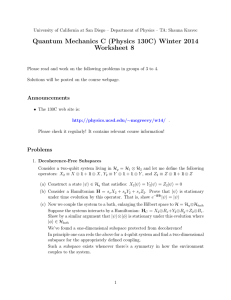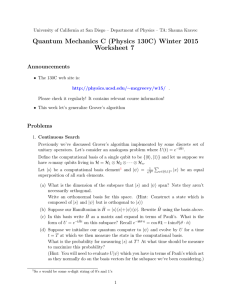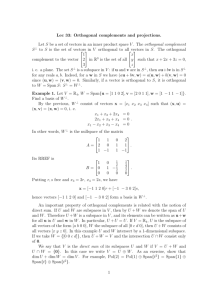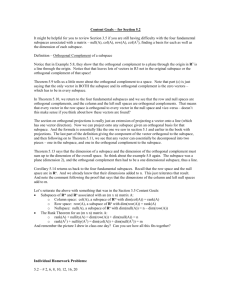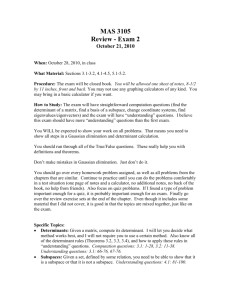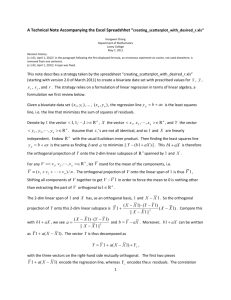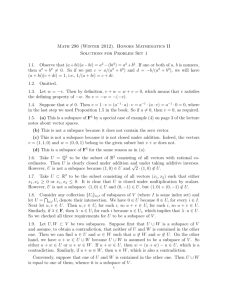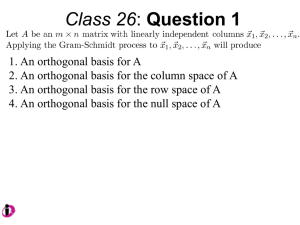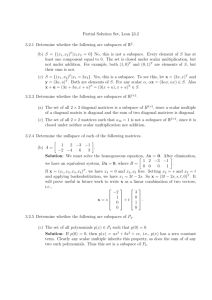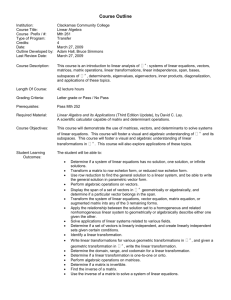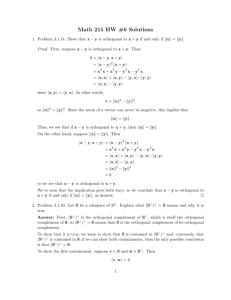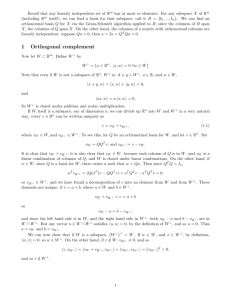Coverings Obtained by Projection
advertisement
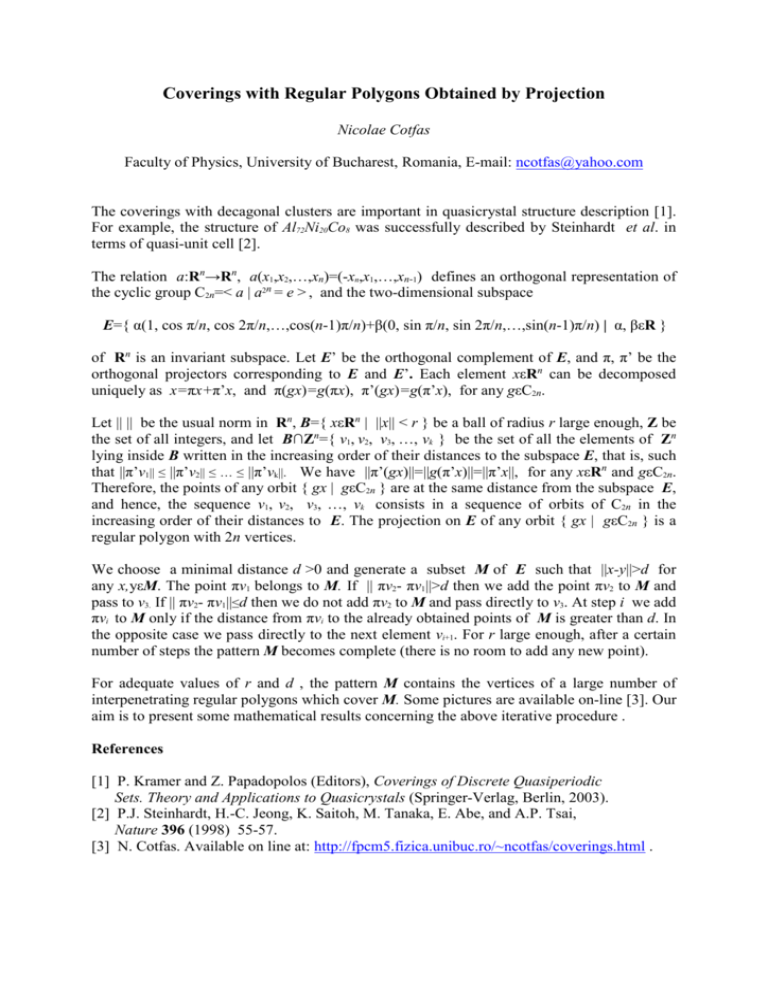
Coverings with Regular Polygons Obtained by Projection
Nicolae Cotfas
Faculty of Physics, University of Bucharest, Romania, E-mail: ncotfas@yahoo.com
The coverings with decagonal clusters are important in quasicrystal structure description [1].
For example, the structure of Al72Ni20Co8 was successfully described by Steinhardt et al. in
terms of quasi-unit cell [2].
The relation a:Rn→Rn, a(x1,x2,…,xn)=(-xn,x1,…,xn-1) defines an orthogonal representation of
the cyclic group C2n=< a | a2n = e > , and the two-dimensional subspace
E={ α(1, cos π/n, cos 2π/n,…,cos(n-1)π/n)+β(0, sin π/n, sin 2π/n,…,sin(n-1)π/n) | α, βεR }
of Rn is an invariant subspace. Let E’ be the orthogonal complement of E, and π, π’ be the
orthogonal projectors corresponding to E and E’. Each element xεRn can be decomposed
uniquely as x=πx+π’x, and π(gx)=g(πx), π’(gx)=g(π’x), for any gεC2n.
Let || || be the usual norm in Rn, B={ xεRn | ||x|| < r } be a ball of radius r large enough, Z be
the set of all integers, and let B∩Zn={ v1, v2, v3, …, vk } be the set of all the elements of Zn
lying inside B written in the increasing order of their distances to the subspace E, that is, such
that ||π’v1|| ≤ ||π’v2|| ≤ … ≤ ||π’vk||. We have ||π’(gx)||=||g(π’x)||=||π’x||, for any xεRn and gεC2n.
Therefore, the points of any orbit { gx | gεC2n } are at the same distance from the subspace E,
and hence, the sequence v1, v2, v3, …, vk consists in a sequence of orbits of C2n in the
increasing order of their distances to E. The projection on E of any orbit { gx | gεC2n } is a
regular polygon with 2n vertices.
We choose a minimal distance d >0 and generate a subset M of E such that ||x-y||>d for
any x,yεM. The point πv1 belongs to M. If || πv2- πv1||>d then we add the point πv2 to M and
pass to v3. If || πv2- πv1||≤d then we do not add πv2 to M and pass directly to v3. At step i we add
πvi to M only if the distance from πvi to the already obtained points of M is greater than d. In
the opposite case we pass directly to the next element vi+1. For r large enough, after a certain
number of steps the pattern M becomes complete (there is no room to add any new point).
For adequate values of r and d , the pattern M contains the vertices of a large number of
interpenetrating regular polygons which cover M. Some pictures are available on-line [3]. Our
aim is to present some mathematical results concerning the above iterative procedure .
References
[1] P. Kramer and Z. Papadopolos (Editors), Coverings of Discrete Quasiperiodic
Sets. Theory and Applications to Quasicrystals (Springer-Verlag, Berlin, 2003).
[2] P.J. Steinhardt, H.-C. Jeong, K. Saitoh, M. Tanaka, E. Abe, and A.P. Tsai,
Nature 396 (1998) 55-57.
[3] N. Cotfas. Available on line at: http://fpcm5.fizica.unibuc.ro/~ncotfas/coverings.html .
